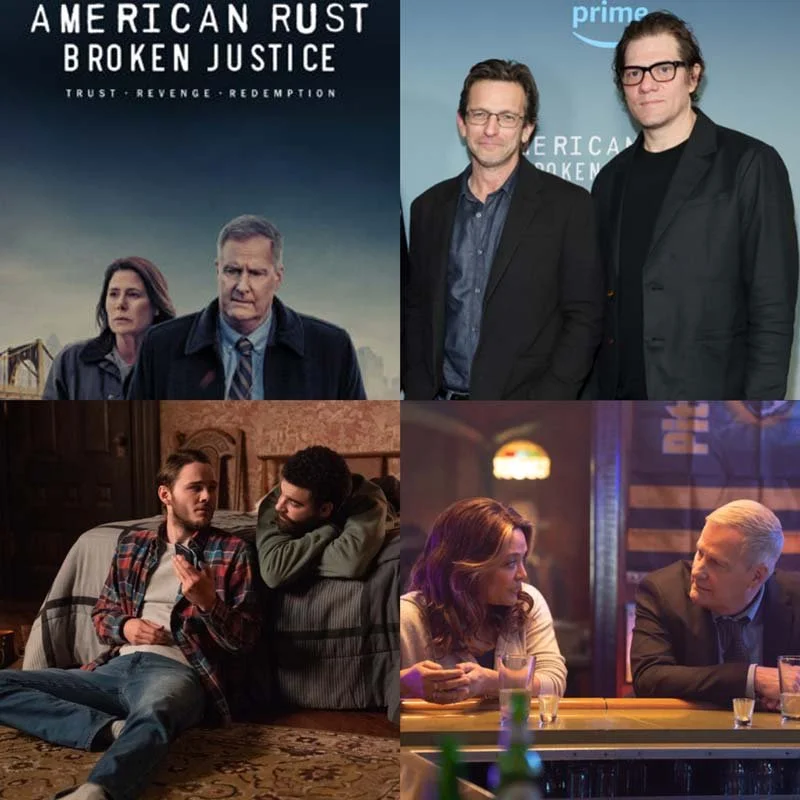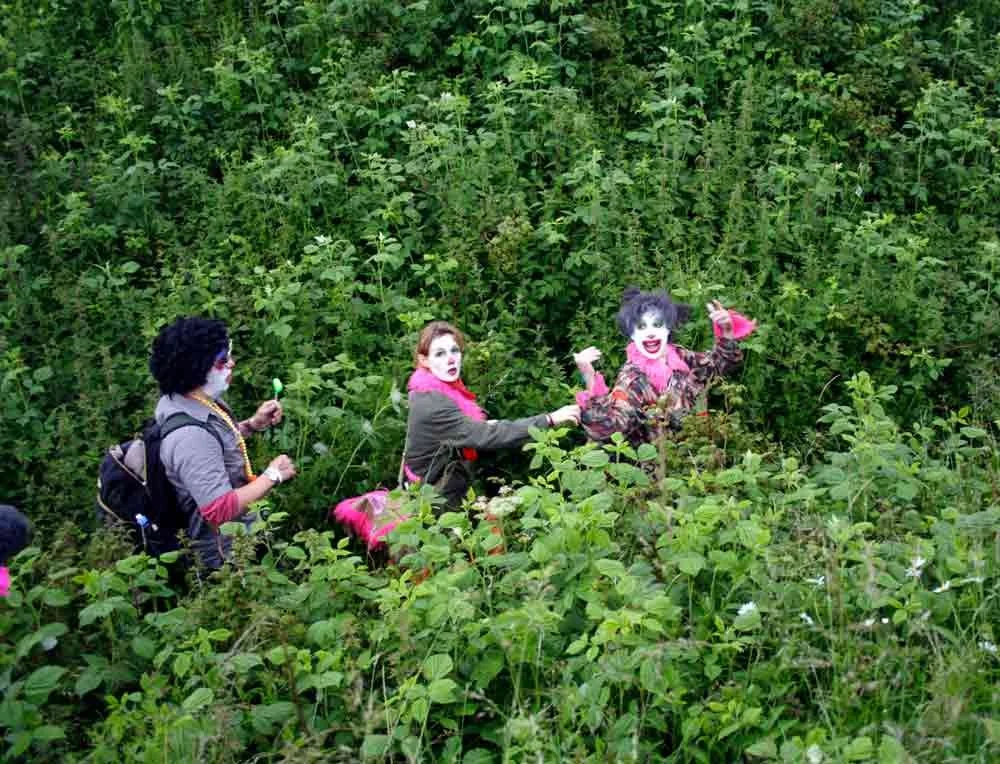Stuart Dryburgh is a British born, New York based cinematographer. His credits include ‘The Great Wall’, ‘The Secret Life of Walter Mitty’, ‘Bridget Jones’ Diary’, ‘The Piano’ (AAN 1994) and ‘An Angel at my Table’. Stuart Dryburgh was born in the UK in 1952, and migrated with his family to New Zealand in 1961, where he spent most of his childhood and young adult life. He earned a Bachelor of Architecture from Auckland University in 1977. Stuart started out working on early NZ films such as ‘Middle Age Spread’ and ‘Good-Bye Pork Pie’ and ‘Smash Palace’. He was employed as a gaffer from 1979 – 1985, working on many NZ and international feature films and commercials. From 1985 on he has worked only as a cinematographer, at first shooting short films, music videos, and tv commercials. In 1989 he shot the 3 part TV mini series ‘An Angel at my Table’ for director Jane Campion. This led to another Dryburgh/ Campion collaboration, ‘The Piano’. For this film he was nominated for an Academy Award for Best Cinematography in 1994.
His next project, ultimately his last in New Zealand for many years, was ‘Once Were Warriors’ with New Zealand director Lee Tamahori. In 1994 Dryburgh shot his first US feature film, the ‘Peres Family’, for director Mira Nair,and moved permanently to the US in 1996.
STUART DRYBURGH
I was very influenced before I became a filmmaker (because I grew up as a young adult in the 60s and 70s) by that sort of wave of new independent films that came out of America in that period as typified in the book Easy Riders, Raging Bulls by Peter Biskind. Martin Scorcese, Taxi Driver, The French Connection, those amazing New York movies where they were shooting in the streets at night with no light and it was dark as hell but so exciting. Bob Rafelson's Five Easy Pieces. Terrence Mallick. If I had to choose one movie I always say Terrence Mallick's Badlands. If I have to ever choose one it's that one. It's just such an amazing film. Great music and great acting. Just sort of stood back, relaxed cinematography by Tak Fujimoto. That era of John Cassavetes movies. Oh, my god, Gloria, Woman Under the Influence. Just outstanding and daring and free. In the film world, I’m probably more influenced by that than I even realize. I always appreciated the magic of cinema, even before I was involved.
THE CREATIVE PROCESS
Tell us how you came to be a cinematographer.
DRYBURGH
Yes, bear in mind that in the mid-70s, when I was in university, there really was no film industry in New Zealand where I was living and studying. And my father was an architect and, sort of for want of anything else, I kind of fell into that. I knew a lot of architects and I liked the creative process. I was in school for that. In my final year, I became inspired to do my final year of sub-thesis in the form of a film.
So I borrowed a 16 mm camera from the art college across the way and bought some 100ft daylight loads of film and figured out where I could get it processed and started sort of making this film really without any real idea of what I was doing. I mean, pretty naive, but it was fun. And the result was okay. And Dave Mitchell the tutor sort of interceded on my behalf when it came to assessment and said, "This may not be architecture the way we know it, but don't worry, he's never going to practice and embarrass us. Let's just give him a degree, get him out of here." And I drove a taxi in Sydney for six months and then came back to New Zealand and started working as a runner, lighting assistant, whatever, on the local productions that were starting to kick up in the freelance world. So I kind of fell into it. I had good creative training in architecture. I loved my photography and the film industry was just kind of getting going. And, as I like to say, I was unemployed, young, available and interested and therefore they kind of invited me to run away and join the circus with them. And I did.
And it was very much like running away and joining the circus in those days. A sort of almost hippy-dippy group involved in filmmaking. And we were all kind of learning. There were a few people who had been trained with film cameras for the local TV stations. A couple of people that even had overseas experience, people who recorded sound, who came from radio mostly, art directors who'd worked in TV. It was very much a group of people making it up as we went along and sharing knowledge. And it was the most extraordinary film education because I was often being trained to do lighting. I fell into the lighting department quite quickly. I was being trained by a cameraman to be their lighting technician because they needed somebody to do it, not because I actually knew what the hell I was doing. So they would literally be on the job training with me. And it was just the most extraordinary training, really, just the best.
THE CREATIVE PROCESS
The first film I saw of yours, which I'm sure everyone was so moved, that poem to place, it seemed to be–The Piano, which you just seemed to explode onto our vision. I know in some way you felt pigeonholed by that, but it's just a very beautiful film.
DRYBURGH
Oh, I don't know about pigeonholed. I was incredibly lucky that my first film. I'd done a couple of long-form things before that, one with Jane Campion, the director, An Angel at my Table, which was conceived of as what we would call limited series now. Three-part miniseries for TV shot on 16mm but eventually blown up to 35 for theatrical release in certain markets.
But I mean, no, The Piano was quite literally my first feature film. And I had definitely been honing my craft, for want of a better word for about five or six years, shooting TV commercials and music videos and pretty much anything that came along. Plus there's a culture of doing short movies as well in New Zealand. Our government arts body funded short films, 10 to 15 minutes, essentially filmic short stories. And I'd done quite a few of them by that stage, so I had the skill set, I guess, but I had none of the sort of big movie skills. So, I was incredibly lucky that Jane and I had struck up a great relationship. And the film The Piano is almost a silent movie. The main character, Holly Hunter's character doesn't speak. It became very apparent just from the earliest conversations with Jane that the storytelling would be primarily with the camera. But you weren't going to rely very heavily on dialogue or exposition on this movie. There is dialogue, obviously, the other character, the non-mute characters, but the central character is mute. And so it really threw the weight on the storytelling.
THE CREATIVE PROCESS
You spoke about earlier National Geographic magazines (as being an inspirational source for image tones in The Piano). And it made me think about how now National Geographic is so sharp, and we see the same thing with digital versus film and that that's something the variability, those happy accidents. Where do you stand on film? You have a certain deep affection for it?
DRYBURGH
I do have a deep affection for film. As you say, that particularly because of the happy accidents that, as a cinematographer of some experience, for all of your knowledge and your ability to manipulate the image, stuff happens that you don't expect and you couldn't anticipate when light goes through a lens and hits a film emulsion. That's not to say they don't happen in the digital world, but they're less surprising when they do because you see them immediately.
And I think that it sort of led there to be a sort of playbook in digital photography. All the things that as a young cinematographer and camera assistant and gaffer we tried to avoid which was lens flare. It was all–don't ever have lens flare. It's really bad! Now everyone wants lens flare. And to the point that sometimes they actually add it in digitally in post-production. It's like this crazy shit. I still prefer film, as I do actually think, even with the best cameras and I've had the good fortune to work with the ARRI ALEXA 65 system, which is a medium format/large format digital system, which really is beautiful. It's as close as digital gets to film, in my opinion. I think if I was really, really, really going for beauty above all else, I would still choose to shoot film, and occasionally we do. Yeah, I've still got a deep affection for film, and I do think there's something magical about the fact that when you're in an editing room and you pick up a piece of workprint and hold it up to the window or the light and actually see the image. It's really there. It exists. You can't do that with digital medium. That's just a bunch of zeros and ones buried in a box somewhere. So there's something tactile.
You know, back when I was starting and shooting commercials in New Zealand as a kid, I used to love visiting the editing room. Sometimes that was the only way we saw dailies, and the editor would be sitting there with the film, and he'd be like, "Right, I think I like this bit here." And boom, choong, choong. You know, it was so physical and tactile and, I don't know, it's just magic. And that we don't have in the digital world.
This is an excerpt of a 8,000 word interview which will be published across our network of participating journals in the coming weeks. This interview was conducted by Mia Funk with the participation of collaborating universities and students. Associate Interviews Producer on this podcast was Heather Osman. Digital Media Coordinator is Yu Young Lee. “Winter Time” was composed by Nikolas Anadolis and performed by the Athenian Trio.
Find us on Apple Podcasts, Spotify, Google Podcasts, Podcast Addict, Pocket Casts, Breaker, Castbox, TuneIn, Overcast, RadioPublic, Podtail, and Listen Notes, among others.



















































